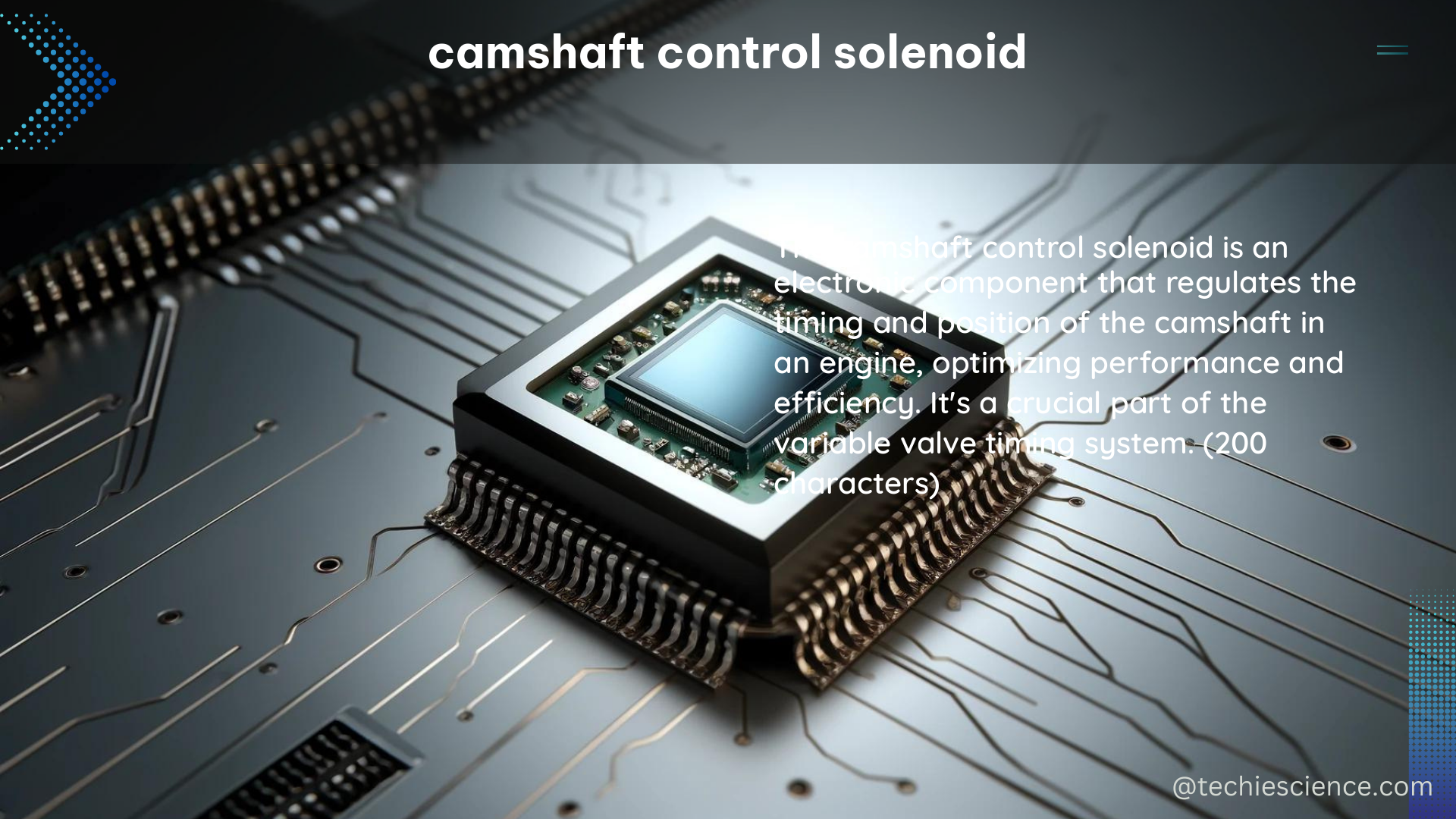The camshaft control solenoid, also known as the camshaft position actuator solenoid, is a critical component in modern engines equipped with variable valve timing (VVT) systems. This solenoid plays a vital role in controlling the flow of engine oil to the camshaft phaser, which in turn adjusts the camshaft angle to optimize engine performance, fuel efficiency, and emissions.
Understanding the Camshaft Control Solenoid
The camshaft control solenoid is an electronically-controlled valve that regulates the oil flow to the camshaft phaser. When the solenoid is energized, it opens the oil passage, allowing the phaser to adjust the camshaft timing. Conversely, when the solenoid is de-energized, it closes the oil passage, locking the camshaft in a fixed position.
Solenoid Resistance Measurements
Measuring the resistance of the camshaft control solenoid is a crucial diagnostic step to determine its functionality. A properly functioning solenoid should have the following resistance values:
- Intake side: Typically around 58 Mega Ohms
- Exhaust side: Typically around 10-12 Ohms
- Across the two pins: Typically around 12.8 Ohms
Resistance values that fall outside of these ranges may indicate a problem with the solenoid or its associated wiring and control circuit.
Voltage and Ground Checks
Ensuring the camshaft control solenoid receives the correct voltage and ground signals is essential for its proper operation. The solenoid should typically operate at the vehicle’s battery voltage, which is usually around 12V. If the solenoid is not receiving the correct voltage or has issues with the ground connection, it can cause the solenoid to malfunction.
Control Circuit Functionality
Checking the continuity and resistance of the control circuit can help identify any wiring problems or open circuits that could prevent the solenoid from functioning correctly. This includes inspecting the wiring harness, connectors, and the control module (PCM) responsible for actuating the solenoid.
Technical Specifications

To properly diagnose and troubleshoot camshaft control solenoids, it’s important to be familiar with their technical specifications:
- Operating Voltage: The solenoid typically operates at the vehicle’s battery voltage, usually around 12V.
- Resistance Specifications: While resistance values may vary between different solenoid models, a typical range is between 10-20 Ohms.
- Current Draw: The solenoid’s current draw can provide insight into its power consumption and potential issues. If the solenoid draws significantly more or less current than specified, it could indicate a problem.
Camshaft Control Solenoid Troubleshooting and Replacement
When dealing with issues related to the camshaft control solenoid, follow these steps for proper diagnosis and repair:
- Locate the Solenoid: The camshaft control solenoid is typically located near the camshaft phaser or the cylinder head, often close to the engine’s timing cover.
- Test the Solenoid: Use a multimeter to check the solenoid’s resistance, voltage, and ground connections. Compare your findings with the manufacturer’s specifications to identify any issues.
- Inspect the Wiring and Connectors: Carefully inspect the wiring harness, connectors, and any related components for signs of damage, loose connections, or corrosion that could affect the solenoid’s operation.
- Perform a Relearn Procedure: If the solenoid has been replaced or if the vehicle has experienced a significant loss of power, a camshaft position relearn procedure may be required. This process typically involves driving the vehicle at specific speeds and RPMs while the PCM learns the new camshaft position.
Conclusion
The camshaft control solenoid is a critical component in modern engines with variable valve timing systems. Understanding its function, diagnostic procedures, and technical specifications is essential for effectively troubleshooting and repairing any issues related to this component. By following the steps outlined in this comprehensive guide, you can confidently diagnose and address camshaft control solenoid problems, ensuring your vehicle’s optimal performance and efficiency.
References
- Camshaft Control Solenoid Resistance Measurement
- Camshaft Position Actuator Solenoid Relearn Procedure
- Camshaft Profile Actuator Solenoid Troubleshooting
- Variable Valve Timing Solenoid Diagnosis
- Camshaft Position Sensor Replacement and Relearn

The lambdageeks.com Core SME Team is a group of experienced subject matter experts from diverse scientific and technical fields including Physics, Chemistry, Technology,Electronics & Electrical Engineering, Automotive, Mechanical Engineering. Our team collaborates to create high-quality, well-researched articles on a wide range of science and technology topics for the lambdageeks.com website.
All Our Senior SME are having more than 7 Years of experience in the respective fields . They are either Working Industry Professionals or assocaited With different Universities. Refer Our Authors Page to get to know About our Core SMEs.